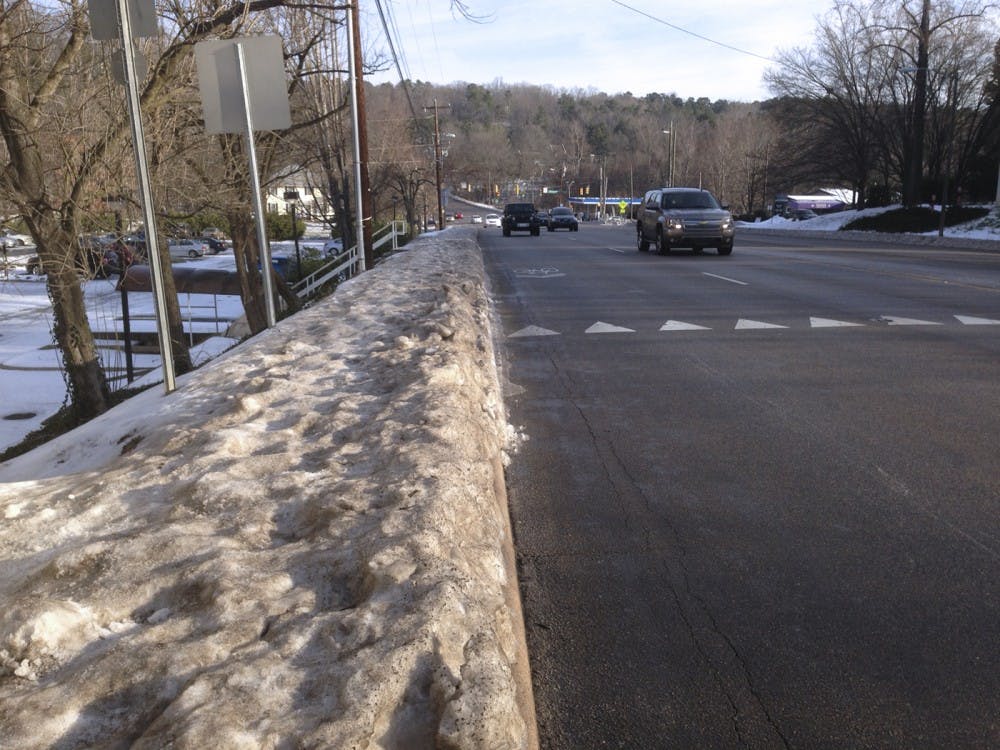Sidewalks, the North Carolina Department of Transportation and Winter Storm Jonas walk into a bar. This is the beginning of a bad joke that I won’t finish, but the relation between the three is unmistakable.
Citizens across North Carolina were made immobile on Friday as many roads remained impassable. The fact that we could go nowhere is a wake-up call to many North Carolinians of their auto-dependence, the conundrum we seem to recognize only while sitting in hours of traffic or when Mother Nature dumps half an inch of snow on us.
When the snow started falling early Friday morning, the University and many other institutions closed. Town, University and state employees and contractors were hard at work plowing and shoveling snow all weekend. Despite their labor, North Carolina’s roads proved deadly multiple times that day, claiming accident victims in Hickory, Johnston and Iredell counties.
The people clearing those roads and those who direct them have the best intentions. But the decisions made by the tobacco magnates, politicians and engineers who built much of our infrastructure did not have much foresight in the way of planning for safe, walkable and resilient cities.
When the first highways came to our state, they were envisioned as an economic development tool. Instead, they stimulated endless sprawl that turned tiny towns like Cary, Apex and imminently Pittsboro into cookie cutter neighborhoods-in-name-only. As an asset today, they drain our transportation budget, contribute to millions of hours of labor squandered and foment the emission of climate change inducing pollutants.
An analysis of the state’s transportation funding by the Tri-State Transportation Campaign found that a huge majority of transportation funds are funneled to new road construction and maintenance, while negligible amounts are doled to bicycle, pedestrian and transit infrastructures.
Many of these investments are antithetical to the type of infrastructure the 21st century American wants. A 2015 National Association of Realtors poll found that millennials, Americans born between the early 1980s and the early 2000s, are more likely than previous generations to desire and seek out dense, walkable, transit-oriented communities to live in.




